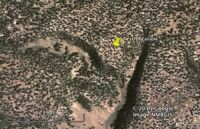Springfield
Silver Member
lastleg said:Springfield:
Just wanted to say thanks for that link. Very thought provoking and it
has a ring of truth.
You're welcome, leg. I would imagine with most or all of these legends, the truth is seldom as it seems.
lastleg said:Springfield:
Just wanted to say thanks for that link. Very thought provoking and it
has a ring of truth.
peterm said:I was hoping that this forum had serious researchers who are looking for the LAD, but it appears that this is not true. A researcher would have understood what I have presented. I have no theory only information that has been backed up by years of field work and research from private collections in libraries across the country. I don't care what you believe in. Obviously, all you want to do is share stories with each other and have no inclination to do research. Believe what you will and keep dreaming about the LAD because that is all you will ever have.
Adios from a successful prospector!
Pete
peterm said:....Sounds to me like you're just an armchair reader of stories....
peterm said:All right gentlemen. I apologize if I seem smug. I do not mean to come across that way. But, let me ask you how you would handle telling about finding the canyon without revealing its location ........
..... to show a picture of the canyon would be to expose its location. All of you are smart enough to locate the canyon on google maps from a picture. Also, I would not be surprised if some of you have been there and just didn't know it.

It is no wonder nothing was remembered by Adams, who at best, had never been there and was not in a position to ask the correct questions.....
Real de Tayopa said:Good morning my friends, one important point apparently not generally considered. "You do not run at night in Mt country, even with a full moon. that is an excellent way to commit suicide, or become seriously injured, which is the same thing in the end. It is even very difficult just cautiously walking. The Indians were handicapped the same way.
Sooo, perhaps many are looking too far away from the fort site??
As for traveling at night to avoid the Indians, hmm, they were pros at tracking, they had to be to survive from hunting and other war parties, etc. Some one traveling at night would be unable to take care in covering their movement sign properly, it would be a 'neon sign' in those days.
I rather suspect that the Indians knew just how many were in the party and so looked for any survivors, after all, you do not just attack an enemy until you know his strength. The Apache almost never attacked frontally, always from ambush. He was well aware of tribal man power attrition.
Side thingie, please don't believe that the Indians are still guarding it, or the LDM, they have modernized just as we have, and know the full value of Precious metals and Yankee dollars, witness the explosive growth of the various 'Indian Casinos'.
If they had it, or knew where it was, they would simply file on it today for complete potection..
Incidentally, Mexican piloncios / brown sugar cones are fairly pointed. They are generally cast in wooden forms and this form allows for easier removal. The same as for assay buttons.
Just curious.
Don Jose de La Mancha
Some southwestern terrain can be traversed at night, especially with enough moonlight. Some cannot under any circumstances at night. If you knew the terrain in question, you could make a judgement. 'Thorny'? Haha, yeah - lots of those to avoid. Good one, Oro.Oroblanco said:..... It is difficult to estimate just how far a man could get, traveling at night, in rough country when we do not know what kind of brush or other obstacles were in the path. Even the time of year is a factor in such estimations, for night is longer in winter than in summer, and whether the moon was shining brightly or was it overcast or new moon conditions when visibility would be very poor. This particular question is a most thorny one in my opinion.
Oroblanco
 ?
?Oroblanco said:HOLA amigo BudP and everyone,
BudP wrote
It is no wonder nothing was remembered by Adams, who at best, had never been there and was not in a position to ask the correct questions.....
Are you saying that Adams never was at the Adams Diggings? Thank you in advance,
Oroblanco


Oroblanco said:..... Placer miners are not so good that they get every speck...
Oroblanco